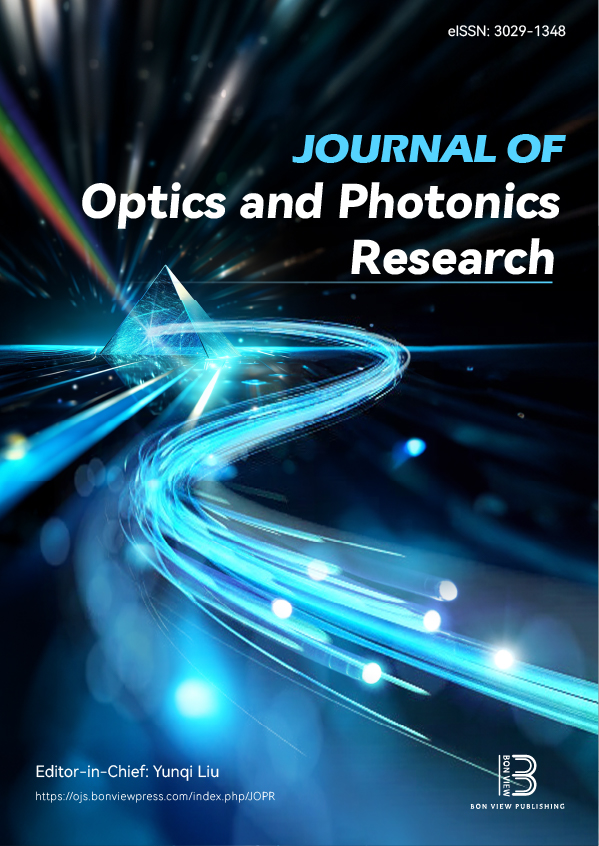Mode-Group (De)Multiplexer Based on Directional Coupler Formed by Heterogeneous Integrated Waveguides
DOI:
https://doi.org/10.47852/bonviewJOPR42023675Keywords:
mode multiplexer, optical waveguide device, lithography, directional coupler, polymer waveguideAbstract
A simple mode-group (de)multiplexer utilizing a co-planar directional coupler formed by heterogeneous waveguides is proposed, which features two few-mode cores with different refractive indices and heights. The proposed device enables the control of mode-group (de)multiplexing between two few-mode cores, i.e., for manipulating both the E21 and E12 modes as a mode group. A three-mode (de)multiplexer is designed and fabricated with polymer materials through multi-step photolithography to demonstrate the proposed methodology, where only the high-order modes couple between two few-mode cores. For E21 mode and E12 mode, A coupling ratio higher than 90.6% and 89.9% is measured of our device within the C-band, ranging from 1530 to 1565 nm. A low polarization state sensitivity is confirmed by modal crosstalk lower than −9.8 dB and −9.5 dB to the E11 mode from E21 mode and E12 mode, respectively. A modal crosstalk lower than −17.8 dB to both the E21 and E12 modes from E11 mode is represented. The proposed mode-group (de)multiplexer can be further developed to manipulate more guide mode groups, and the crosstalks can be further decreased by introducing horizontal and vertical tapers during the fabrication. The device proposed can find application in photonic integrated chips where mode-group manipulations are required.
Received: 23 June 2024 | Revised: 14 August 2024 | Accepted: 5 December 2024
Conflicts of Interest
The authors declare that they have no conflicts of interest to this work.
Data Availability Statement
Data are available from the corresponding author upon reasonable request.
Author Contribution Statement
Jiali Zhang: Formal analysis, Investigation, Data curation, Writing - original draft, Writing - review & editing, Visualization. Kedi Peng: Software, Writing - review & editing, Visualization. Jiaqi Ran: Writing - review & editing. Yaomin Wu: Writing - review & editing. Jiadong Xiao: Writing - review & editing. Yujian Chen: Writing - review & editing. Yarou Chen: Writing - review & editing. Ou Xu: Validation, Supervision. Quandong Huang: Conceptualization, Methodology, Validation, Formal analysis, Investigation, Resources, Data curation, Writing - original draft, Writing - review & editing, Visualization, Supervision, Project administration, Funding acquisition.
Downloads
Published
Issue
Section
License
Copyright (c) 2024 Authors

This work is licensed under a Creative Commons Attribution 4.0 International License.
How to Cite
Funding data
-
National Natural Science Foundation of China
Grant numbers 62205067


